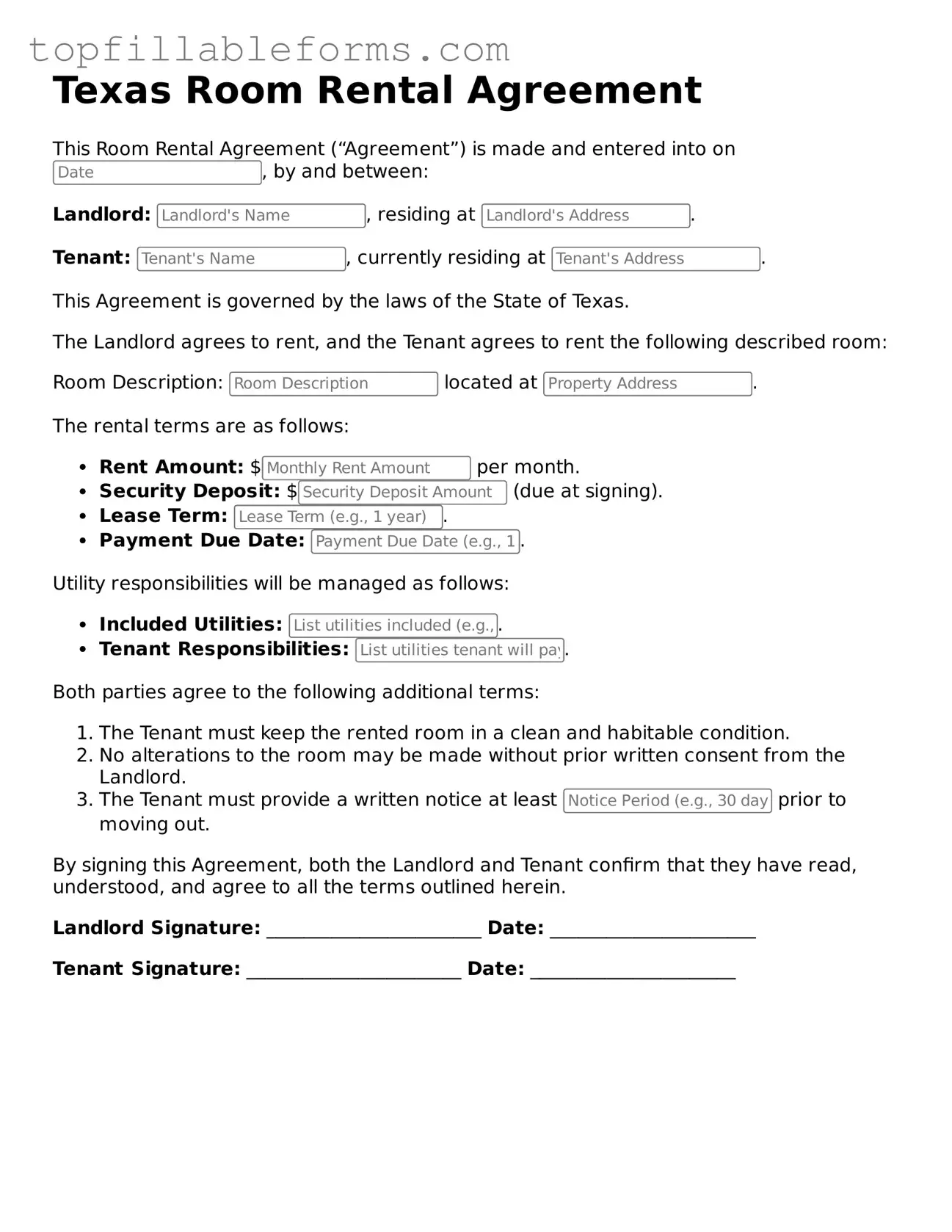Attorney-Verified Room Rental Agreement Template for Texas
The Texas Room Rental Agreement is a legal document that outlines the terms and conditions under which a landlord rents out a room to a tenant. This agreement serves to protect the rights and responsibilities of both parties involved in the rental arrangement. Understanding this form is essential for ensuring a smooth rental experience in Texas.
Open Room Rental Agreement Editor Here
